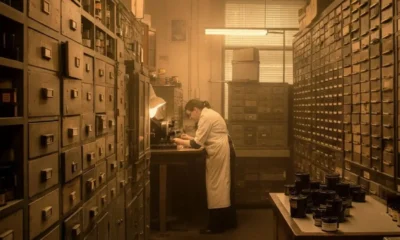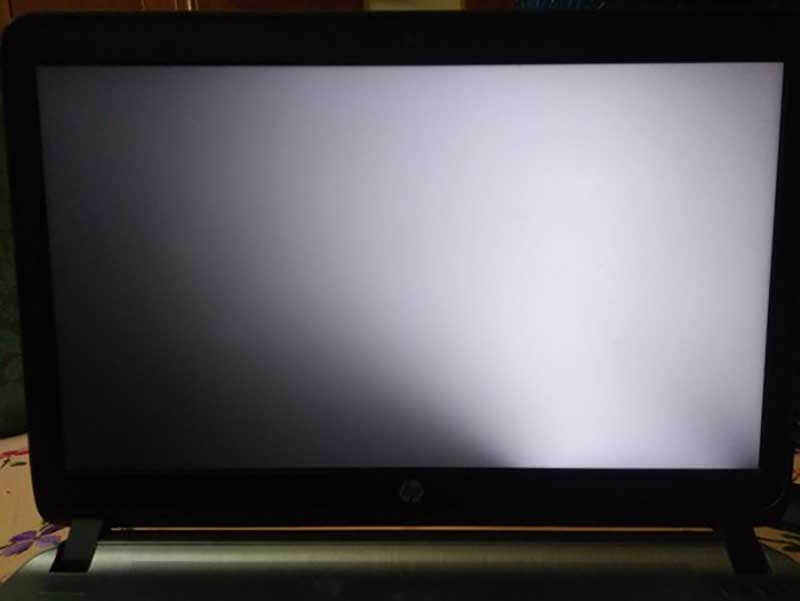Food
Everything You Need to Know about Instant Coffee
After its humble origins, instant coffee has gone a long way. Instant coffee became a standard among soldiers during World War II and after the war. Furthermore, it increased in popularity; as a practical and affordable alternative for coffee consumers.
Today, several techniques, like freeze-drying, spray-drying, and accumulation, are used to make it. The most expensive and time-consuming procedure, freeze-drying, keeps the coffee beans’ flavor and aroma intact.
When you spray the hot, concentrated coffee extract into a stream of cool air, it evaporates and turns to powder. It is a quicker and more economical process known as spray drying. Moreover, when you combine the powder with steam or hot water, agglomeration forms tiny granules that readily dissolve in hot water.
Despite the variations in production techniques, all instant coffee has several qualities in common. You can use high-quality Arabica or Robusta coffee beans to make instant coffee. These beans are roasted, ground, and brewed into a concentrated liquid. After that, the fluid is dehydrated to produce granules or powder that dissolve fast in hot water.
The ease of it is one of its main benefits. With merely hot water, you can create fast and easily. Preferably than traditionally brewed coffee, which calls for equipment and time. It makes it a well-liked option for folks who are often on the road or don’t have access to a coffee machine.
Brewed coffee has a richer, deeper flavor than instant coffee. The taste of it has substantially improved in recent years because of advancements in production methods and the use of quality beans. To learn more about instant coffee and everything to know about it. Moreover, you can read this article to get new information.
History of Instant Coffee
Furthermore, it will be a great idea to start by learning more about the history of this soluble quick-brewing coffee. It’s not a modern invention to make it. In reality, it has a history that dates back to 1771.
Moreover, it was claimed that the first development of water-soluble coffee chemicals was in Britain at about this time. A few decades later, in 1853, during the American Civil War, an experimental coffee (in cake form) was field-tested, allowing soldiers to drink coffee while fighting.
The invention of “instant coffee” by David Strang of Invercargill, New Zealand, in 1890; led to coffee taking various forms over the years.
Sartori Kato of Japan created the first reliable powdered coffee product in 1901. Furthermore, Sartori Kato creates soluble fast-brewed coffee using the skills and tools he had developed for making instant tea.
Instant coffee began to be mass-produced in America by George Constant Louis Washington in 1901. Nonetheless, most people at the time believed that instant coffee powder was a novelty and an acquired taste.
By 1938, Nescafe had come onto the scene and improved the taste by using different processing techniques, making the coffee a regular cupboard stable. Coffee freeze-drying didn’t evolve into the greatest method for maintaining flavor and general quality until the 1960s. That concludes our quick history lesson on instant coffee.
How Is Instant Coffee Made?
Unexpectedly, instant coffee begins the same way as real coffee! Before they begin their transformation into instant coffee, whole coffee beans are first roasted, ground, and brewed. How does it convert from freshly brewed to dry powder, though? Herein lies the science; let’s examine it in more detail.
Coffee must be dried and converted into granules or powder after being manufactured into a potent concentration. The two methods for doing this are freeze-drying and spray-drying. Well-known coffee businesses use these methods to create instant gourmet coffee offers on store shelves.
Spray Drying
A fine mist of liquid coffee concentrate is blown into overly hot, dry air at a temperature of about 480 degrees Fahrenheit to dry coffee. The water in the coffee concentrate fully evaporates as it travels through the dry air and tiny round crystals of coffee from the machine’s bottom.
Freeze Drying
Freeze-drying is another common technique for producing instant soluble coffee. This procedure consists of two steps. They first simmer the coffee and reduce it to a strong extract. After that, they chill the section to around 20 degrees, which transforms it into a thick globby solution.
Once chilled once further to a temperature of roughly -40°F, the coffee liquid is put onto sizable trays on conveyor belts and turned into slabs of coffee ice. After being broken down into granules and placed in a drying vacuum, it vaporizes the solid coffee ice sheets, leaving behind coffee granules.
Key Takeaway
Since its inception, instant coffee has advanced significantly and is now a staple of many coffee users’ daily routines. Although, some might contend that it lacks the same complexity of flavor as traditionally brewed coffee. Furthermore, improvements in production techniques and the use of premium beans have significantly enhanced its flavor of it.
Additionally, this kind of coffee provides levels of convenience that regular brewed coffee simply cannot match. You can choose whether it is right for you by being aware of its history, production processes, flavor, and health advantages. Instant coffee is worth trying, whether you’re a busy professional looking for a quick caffeine fix or a coffee connoisseur looking for new ways to enjoy your favorite beverage.
Food
Innovative Way to Enjoy The Flavors of Delightful Papa Johns Pizza Bowl
Papa Johns Pizza Bowl is a delectable and popular dish offered by Papa John’s, a renowned pizza chain that has been delighting customers with its delicious pizzas for years. This unique creation combines the flavors of a pizza with the convenience of a bowl, resulting in a satisfying and flavorful meal.
Papa Johns Pizza Bowl was introduce as a response to the growing demand for innovative and convenient dining options. It was developed by the culinary team at Papa John’s. Who aimed to create a dish that captured the essence of their signature pizzas while offering a unique twist.
The concept was an instant hit among pizza lovers, and Papa Johns Pizza Bowl quickly gain popularity. Papa John’s offers a variety of flavorful dipping sauces that add an extra dimension to your Pizza Bowl. Options like marinara, ranch, garlic sauce, or barbecue sauce provide additional taste sensations to explore.
Offer Promo Codes
When you buy online from Papa John’s, a Papa Johns Promo Code 50% Off the usual menu pricing is available. This brand will offer the code with a different set of terms on each occasion. The key is to keep tabs on the discount’s availability and be aware of how to use the promotion while ordering pizza from Papa John’s.
The Ingredients and Flavors of Papa John’s Pizza Bowl
Papa Johns Pizza Bowl is made using the finest quality ingredients to ensure a delightful taste experience. The bowl is filled with a combination of fresh vegetables, succulent meats, and a generous amount of melt cheese. The flavorful sauce, made from ripe tomatoes and a blend of herbs and spices, adds a tangy and savory element to the dish. With every bite, you can savor the distinct flavors that Papa John’s is known for.
Popularity of Papa John’s Pizza Bowl
Papa Johns Pizza Bowl has gained immense popularity among pizza enthusiasts worldwide. Its unique presentation and mouthwatering flavors have made it a favorite choice for those seeking a convenient and satisfying meal. The combination of fresh ingredients, expert craftsmanship and the signature Papa John’s touch has contributed to its widespread appeal.
Health Benefits of Pizza Bowl
While Papa Johns Pizza Bowl is undoubtedly a delicious treat, it’s worth noting that it can also enjoyed as part of a balanced diet. The inclusion of fresh vegetables and quality ingredients provides essential nutrients, and the portion size of the bowl helps with portion control. It’s important to remember that moderation is key when indulging in this flavorful dish.
Innovations and Variations of Papa John
Papa Johns Pizza Bowl was introduce as a response to the growing demand for innovative and convenient dining options. It was develop by the culinary team at Papa John’s, who aimed to create a dish that captured the essence of their signature pizzas while offering a unique twist. The concept was an instant hit among pizza lovers and Papa John’s Pizza Bowl quickly gained popularity.
Offers Vegetarian Pizza Bowl
For vegetarians, Papa John’s offers a vegetarian version of the Pizza Bowl. It features an array of fresh vegetables like bell peppers, onions, mushrooms, and black olives, combined with flavorful cheese and the signature sauce. It’s a delicious and satisfying option for those who prefer plant-based ingredients.
Crafted Meat Lover’s Pizza Bowl
Meat lovers rejoice Papa John’s has crafted a Pizza Bowl specifically for those who crave the savory goodness of various meats. This version includes mouthwatering toppings like pepperoni, Italian sausage, bacon, and ham, all generously layered on top of the cheese and sauce. It’s a hearty and indulgent choice for meat enthusiasts.
Create Custom Pizza Bowl
One of the great things about Papa Johns Pizza Bowl is its versatility. Customers can customize their Pizza Bowl by selecting their preferred toppings and ingredients. Whether it’s adding extra cheese, choosing specific vegetables, or combining different types of meats, the customization options allow individuals to create their perfect Pizza Bowl.
Spicy Pizza Bowl
For those who enjoy a little kick of heat, Papa John’s offers a spicy variation of the Pizza Bowl. It incorporates spicy toppings like jalapenos, hot peppers or spicy sausage, along with a zesty sauce to create a fiery flavor profile. It’s an excellent choice for spice enthusiasts looking to elevate their pizza experience.
Unique Twist Features at Breakfast Pizza Bowl
Papa John’s has even ventured into the breakfast realm with a breakfast-themed Pizza Bowl. This unique twist features breakfast-inspired toppings such as scrambled eggs, bacon, sausage, and a blend of cheese. It’s a delicious way to start the day and offers a combination of breakfast flavors in a convenient bowl format.
The Perfect Accompaniments for Bowl
To enhance your Papa Johns Pizza Bowl experience, consider pairing it with these delightful accompaniments. Garlic Parmesan Breadsticks these buttery and garlic-infused breadsticks perfectly complement the flavors of the Pizza Bowl. Their soft texture and rich taste make them an ideal side dish.
Well-Rounded Dining Experience
Fresh Garden Salad adding a fresh garden salad to your meal provides a refreshing contrast to the Pizza Bowl’s hearty flavors. The crisp lettuce, vibrant vegetables and tangy dressing create a well-rounded dining experience. Iced Cold Beverage quench your thirst and balance the richness of the Pizza Bowl with a cold beverage of your choice. Whether it’s a chilled soda, iced tea or a refreshing fruit juice, it’s the perfect to complete your meal.
Find Out More Discount On Cookies Visit Now crumbl cookie promo code And Enjoy!
Ordering is Quick and Convenient
Craving a Papa Johns Pizza Bowl ordering online is quick and convenient. Simply visit Papa John’s website or download their mobile app, where you can browse the menu, customize your Pizza Bowl, and place your order with just a few taps. With the option for delivery or pickup, you can enjoy the Pizza Bowl in the comfort of your own home or wherever you prefer.
Offers a Delightful Way to Enjoy Pizza
Papa Johns Pizza Bowl offers a delightful and innovative way to enjoy the flavors of pizza in a convenient bowl format. With its origins rooted in Papa John’s commitment to culinary excellence. This dish has captured the hearts and taste buds of pizza enthusiasts worldwide. Whether you order it from Papa John’s or try e enjoying a night in or hosting a gathering with friends. Consider treating yourself to the delightful Papa John’s Pizza Bowl.
Food
Purchase these healthy cakes for your upcoming party
Although most of us enjoy the occasional cake, traditional cakes are frequently high in sugar, fat, and calories. Thankfully, there are many methods for making delectable, nutritious, and filling cakes. For home delivery, you can either go to a cake shop near me, or you can read about our favorite nutrient-dense, delectable, and healthy cake flavors in this blog. You may order a cake online and have it delivered to your home. We can assist you in achieving your health objectives without making you give up your cravings for sweets or experimenting with new flavors.
First, let’s take a closer look at the delightful world of healthy cakes!
Cakes Made With Oats
A specific type of cake that uses oats as a primary ingredient is an oatmeal cake. In order to make nutritious and wholesome baked goods, oats are frequently used in baking. They make excellent food sources of fiber and protein. The cake typically contains the following ingredients: flour, sugar, eggs, baking powder, butter or oil, and rolled oats or oat flour.
In addition to other forms and dimensions, baking oat cake can be done in sheet pans, loaf pans, and round pans. Some recipes also detail how to flavor the cake by including extras like nuts, raisins, or chocolate chips. To enhance flavor without using refined sugar, oat cake can also be made with ingredients like honey or maple syrup.
Oat cake is a popular dessert among those who are concerned about their health and follow a low-carb or gluten-free diet. It can be consumed at any time of day and is frequently made into a pastry or bite. The health advantages of oats are available in a delicious and filling dessert called oat cake.
The Ragi Cake
When making ragi cake, a particular kind of cake, ragi flour, also known as finger millet flour, is used. Due to its gluten-free status and abundance of essential minerals, protein, and fiber, ragi flour is a favorite ingredient in healthy baking.
The primary ingredient in the cake is frequently ragi flour, which is combined with other ingredients like regular flour, sugar, eggs, baking powder, and margarine or oil. Sheet pans, loaf pans, and other pans can all be used to bake ragi cakes in a variety of sizes and shapes. Some recipes also call for the addition of ingredients like nuts, raisins, or chocolate chips to improve the flavor of the cake.
People who are health-conscious and adhere to a low-carb or gluten-free diet frequently eat ragi cake as dessert. Any time of day is appropriate for its consumption, and it is frequently filled out as a pastry or bite. Ragi cake is a delectable and satisfying dessert that incorporates the health advantages of ragi flour. Moreover, this can be the best birthday cake for dad or grandparents.
Bajra Cakes
Cake referred to as bajra cake is made with bajra flour also referred to as pearl millet flour. Due to its high fiber, protein, and nutrient content as well as its gluten-free status, bajra flour is a favorite ingredient in healthy baking.
Bajra flour is typically added to the cake along with additional ingredients like regular flour, sugar, eggs, baking powder, margarine, and oil. Bajra cake comes in a variety of sizes and shapes, including a sheet container, a round dish, and a serving skillet. Some recipes also include instructions for adding ingredients like nuts, raisins, or chocolate chips to the cake to improve its flavor.
Bajra cake is a favorite dessert among those who care about their health and adhere to gluten-free or low-carb diets. It can be eaten any time of the day and is frequently made into a pastry or small bite. The health advantages of bajra flour and a decadent and satisfying dessert can be combined wonderfully in bajra cake.
A jowar cake
Jowar flour, also known as sorghum flour, is used to make a specific type of cake known as jowar cake. Due to its gluten-free status and high fiber, protein, and nutrient content, jowar flour is a favorite ingredient in healthy baking.
Other essential ingredients for this cake frequently include all-purpose flour, sugar, eggs, baking powder, butter or oil, and jowar flour. Among other shapes and sizes, you can bake jowar cake in loaf pans, round pans, and sheet pans. Some recipes also call for the addition of ingredients like nuts, raisins, or chocolate chips to improve the cake’s flavor.
Conclusion
Finally, nutrient-rich cakes can be just as tasty and satisfying as traditional cakes while still providing the advantage of being nutrient-rich. There is no need to give up flavor when there are so many flavor options for online cake delivery in Mumbai from the best website. Whether they prefer decadent chocolate cakes made with healthier ingredients or fruity flavors like strawberry and lemon, everyone can find something they like.
Food
Nothing Bundt Cakes Coupons: Enjoy Delicious Savings on Irresistible Treats!
Introduction:
Indulging in a delectable dessert is always a delightful experience, and Nothing Bundt Cakes is the perfect destination for cake lovers. To sweeten the deal even further, Nothing Bundt Cakes offers various coupons that allow you to enjoy their scrumptious cakes at discounted prices. In this article, we will explore different coupon options, including $5 off, $10 off, $15 off, $25 off, $30 off, 10% off, 20% off, 25% off, and 50% off. We will also provide instructions on how to make the most of these coupons. So, let’s dive in and uncover the world of savings and deliciousness!
Nothing Bundt Cakes Coupon Options:
$5 Off Coupon:
With this coupon, you can enjoy a delightful discount of $5 on your purchase at nothing bundt cakes coupon $5 off. This coupon is a fantastic way to save some money while indulging in your favorite cake flavors.
$10 Off Coupon:
Looking for more significant savings? The $10 off coupon is here to help! Treat yourself and your loved ones to the delightful cakes at Nothing Bundt Cakes while enjoying a $10 discount on your total purchase.
$15 Off Coupon:
For even more savings, the $15 off coupon is an excellent option. Imagine savoring the mouthwatering flavors of Nothing Bundt Cakes while enjoying a significant discount on your order. It’s a win-win situation!
$25 Off Coupon:
With the $25 off coupon, you can treat yourself to a grand celebration with Nothing Bundt Cakes. Whether it’s a birthday, anniversary, or any special occasion, this coupon allows you to save big while enjoying the heavenly goodness of their cakes.
$30 Off Coupon:
Looking for a more generous discount? The $30 off coupon is perfect for those who want to make a big impression without breaking the bank. Enjoy the delightful cakes at Nothing Bundt Cakes while enjoying substantial savings on your purchase.
10% Off Coupon:
If percentages are more your style, the 10% off coupon is an excellent choice. This coupon allows you to save 10% on your total purchase at Nothing Bundt Cakes, giving you the opportunity to indulge in their cakes at a discounted price.
20% Off Coupon:
The 20% off coupon takes the savings up a notch. With this coupon, you can enjoy a generous 20% discount on your order at Nothing Bundt Cakes. It’s an incredible opportunity to try out new flavors or stock up on your favorites.
25% Off Coupon:
The 25% off coupon offers a fantastic discount that’s hard to resist. With this coupon, you can save a quarter of the total price on your purchase, allowing you to satisfy your sweet tooth while enjoying significant savings.
50% Off Coupon:
Who doesn’t love a good 50% off deal? Nothing Bundt Cakes occasionally offers this generous coupon, allowing you to enjoy half off on their delightful cakes. It’s a great chance to indulge in their creations without worrying about the price.
How to Use Coupons at Nothing Bundt Cakes:
Now that you’re familiar with the various nothing bundt cakes promo code options available, let’s dive into how to make the most of these savings:

Check for Validity:
Before using any coupon, ensure that it is still valid. Some coupons have expiration dates or specific terms and conditions. Check the coupon details to verify its validity.
Find the Coupon Code:
Depending on the coupon, it may require a unique code or be automatically applied during checkout. If a coupon code is needed, make a note of it or copy it for future reference.
Visit the Nothing Bundt Cakes Website:
Head over to the official Nothing Bundt Cakes website (www.nothingbundtcakes.com) to explore their menu and select your favorite cakes.
Customize Your Order:
Choose the cake flavors, sizes, and any additional options or decorations you desire. Nothing Bundt Cake’s offers a variety of sizes to accommodate different occasions and group sizes.
Add Items to Your Cart:
Once you’ve selected your cakes, add them to your cart. Ensure that the coupon discount is applicable to the items in your order.
Apply the Coupon:
During the checkout process, you’ll typically find a field labeled “Coupon Code” or “Promo Code.” Enter the coupon code you obtained earlier and apply it to your order.
Verify the Discount:
After applying the coupon, the total amount should reflect the discounted price. Double-check to ensure that the discount has been properly applied before proceeding with the payment.
Complete Your Purchase:
Provide the necessary billing and shipping information to finalize your purchase. Nothing Bundt Cakes offers various payment options to make the process convenient for customers.
Enjoy Your Bundt Cakes:
Once your order is confirmed, sit back and anticipate the arrival of your delightful Nothing Bundt Cake’s. When they arrive, savor every bite and relish in the satisfaction of both taste and savings.
Conclusion:
Nothing Bundt Cakes offers a wide range of coupons, allowing cake enthusiasts to enjoy their scrumptious creations at discounted prices. Whether it’s $5 off, $10 off, $15 off, $25 off, $30 off, or percentage-based discounts like 10% off, 20% off, 25% off, or even a fantastic 50% off, these coupons present an opportunity to indulge in delightful cakes while saving money. Remember to check for coupon validity, find the coupon code, and follow the steps provided by Nothing Bundt Cake’s to apply the coupon during the checkout process. So, why wait? Treat yourself or surprise your loved ones with the heavenly taste of Nothing Bundt Cake’s at a discounted price. Happy savings and happy indulging!
Check Also : Now…
-

 Travel4 months ago
Travel4 months agoSave on Campervan Rentals with a roadsurfer Gutscheincode
-

 Travel5 months ago
Travel5 months ago10 Things to Do in Punta Mita
-

 Travel5 months ago
Travel5 months agoBest Things to Do in New York City – Ultimate Travel Guide
-

 Real Estate5 months ago
Real Estate5 months agoHow to Be the Best Real Estate Agent Murfreesboro
-

 Photography5 months ago
Photography5 months agoThe Ultimate Guide to 35mm Film Developing Lab
-

 Real Estate5 months ago
Real Estate5 months agoFind the Best Real Estate Agents Main Line
-

 Real Estate4 months ago
Real Estate4 months agoExplore New Real Estate Programs in Marrakech
-

 Travel4 months ago
Travel4 months agoTailored Tours to Switzerland | Private & VVIP Experiences





















